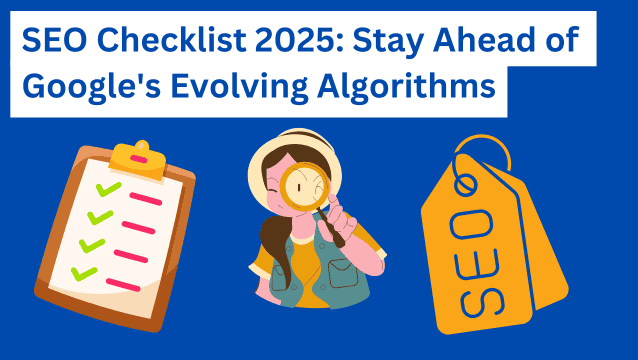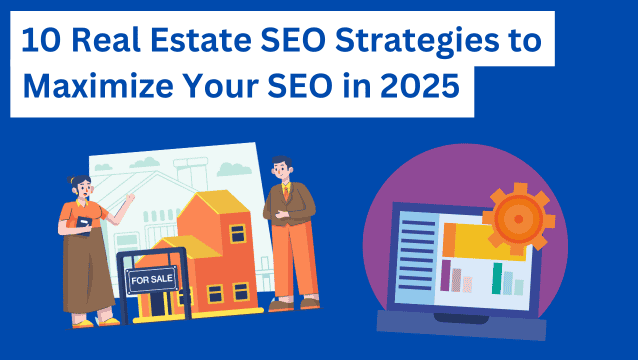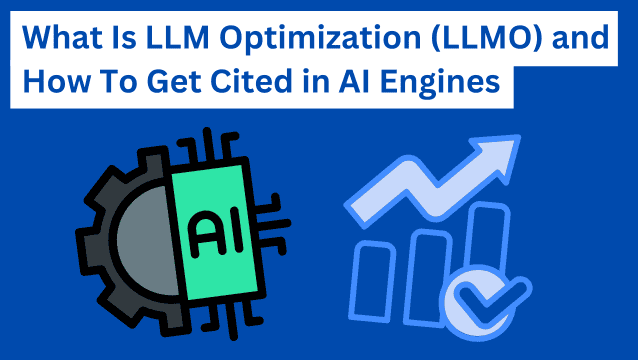Every epic marketing campaign begins with an even more epic marketing strategy.
But as many marketers know, developing that strategy is an ongoing, sometimes arduous, journey.
That’s why, when I started uSERP, one of my first goals was to create a simple visual my team could use to understand our marketing process. Something they could use as a guide as we re-strategize and evolve our marketing approach over time.
When I looked at the big picture, I realized I could break this down using two simple concepts: demand generation and lead generation.
As two pivotal aspects of the sales funnel, demand generation, and lead generation inform everything we do at uSERP.
From how I show up on LinkedIn to how my sales team approaches outreach campaigns, none of it would be possible without demand gen and lead gen.
In this comprehensive guide, I’ll share a deep dive into demand generation and lead generation, how they’re different and where they interconnect.
Are you ready to learn more?
Let’s dive in.
What is demand generation?
Demand generation has two simple goals: Creating awareness and generating interest in your brand’s products and services.
That’s it!
That means …
No sales CTAs. No contact forms. And no gated content.
In other words, you’re not looking to make a sale just yet. Instead, you’re looking to become known.
With demand generation marketing, you’re opting for techniques that boost brand awareness and curiosity. That’s where key drivers, like content marketing, growth marketing, and inbound marketing strategies, come into play.
And speaking of content …
Free content is the engine of demand generation.
It’s the primary tool you’ll use to:
- Establish yourself as a thought leader in your industry
- Present the problems your company solves
- Answer your audience’s burning questions
- Build trust with your audience
- Make your brand known
- Educate your audience
- Build brand authority
- Attract organic traffic
So, whether that’s through blogging, sharing social media posts, or being a guest on a podcast, a demand generation campaign is synonymous with sharing high-quality content.
Some of the most successful demand generation campaigns I’ve run are on LinkedIn.
And to be honest, I don’t get fancy with it.
Instead, I focus on posting super informative and actionable content personalized to my audience. For me, that’s primarily B2B brands and marketers looking to improve their SEO and conversion rates.
So I’ll post things like:
- A tool screenshot pointing out what marketing and SEO data to pay attention to
- A quote image with text that clears the air about using AI in content marketing
- A text-based post warning my audience about poor link-building practices
- A Twitter screenshot showcasing a storytelling tip by yours truly
- A carousel sharing 10 free marketing resources
I also post on Twitter, blog, write guest posts, and say yes to podcast guest invitations that make sense. In addition, I schedule threads on X (ex-Twitter) to ensure consistency with my messaging. Result? Increased chances of getting noticed and of building valuable connections.
With these ongoing generation tactics, I consistently build trust with my audience, create highly shareable content, and organically expand my reach.
From there, it’s all about bottom-of-the-funnel marketing, which, according to 50% of marketers, brings us to lead generation, which is the top priority in a marketing campaign.
What is lead generation?
Lead generation happens after a potential customer passes through the demand generation stage. They’ve already entered your buying process. They trust you. But now, they want more.
At this point in the game, the prospective customer has shown enough interest in you to exchange their contact details for more information.
Enter: The importance of quality leads and lead magnet strategies.
That’s why I highly recommend using a lead scoring system to determine which leads have the best chance of converting now or in the future.
As far as lead magnets go, take a look at your best-performing content.
For instance, if you own a project management SaaS tool, that could be:
- An article sharing 10 ways to plan projects seamlessly
- An Instagram Reel covering three key ways project managers can manage their time better
- An ultimate guide sharing how to break up a long-term project into digestible chunks
From there, give your target audience even more value by digging deeper into each topic — but make it gated (and free).
In this case, that could be:
- The ultimate project planning checklist, complete with planning templates and is available as a digital download after they sign up for your email newsletter
- A project management webinar hosted by a time-management expert, available as a meeting link after the lead fills out a sign-up form on your blog
- An e-book that walks the prospect through how to break up multiple projects into digestible chunks, available as a digital download after the lead fills out the pop-up form on your site’s home page.
Let’s look at an example in action for growing your email list with lead enrichment API.
In September, I repurposed an existing blog post that I published earlier in the year on SEO for startups. I added new content with detailed examples and turned it into a comprehensive PDF guide.
Instead of selling this guide on Gumroad for $9.99, I decided to share it with my Twitter followers for free.
Why? Because I wanted to use this guide to generate high-quality leads that could generate higher customer lifetime value than just a one-time $9.99 purchase of an e-book.
I also decided on Twitter over LinkedIn because it was my most engaging platform (at the time). With tools like Tweet Hunter, which can automatically direct messages to interested users if they comment with the proper emoji, and a Twitter thread scheduler to plan my posts for optimal engagement, Twitter became a no-brainer for this strategy.
Requiring people to comment on your post is an excellent tactic to help boost your tweet higher in the algorithm. The more comments you get on the tweet, the higher the engagement rate and the more likely it’ll appear on more timelines.
One thing to note is that I included some copy in the tweet that indicated my expertise in the SaaS startup world. Otherwise, why would someone trust the content I am putting out there? So remember to build that trust with your audience.
Ultimately, this lead magnet scored 1,385 comments, 231 retweets, 2,186 likes, and over 1,000 email subscribers. Not too shabby for a simple guide about SEO for Startups.
Are you interested in learning more about what was in the guide? Here’s access to download your SEO for Startups Guide for free.
After growing your email list, it’s up to your sales team to contact potential customers and further explore their needs. Depending on where your lead is in the buyer’s journey, they may require additional nurturing or be ready to hear what solutions your team can offer them.
Sales enablement automation can help by automatically providing your team with the most relevant content, insights, and next steps based on where the lead is in their journey, allowing for more personalized outreach and faster responses.
Effective lead tracking will ensure that each lead is appropriately managed and receives the right level of engagement based on their current stage in the funnel.
Whatever the case, your lead generation strategy should focus on your prospects’ pain points and how you can help solve them better than the competition.
If they’re not ready to convert, don’t force it. Instead, use marketing automation and CRM to continue the nurturing process. For instance, consider adding them to an automated, segmented email campaign series and auto-scheduling future follow-up calls and check-ins.
At uSERP, we know how to create killer gated content. But where my team truly shines is in the outreach phase.
And with that, I want to take a moment to discuss how crucial it is to create a humanized outreach approach.
The gist? We talk to people like they’re real human beings.
We don’t bombard them with heavy sales jargon and pressure tactics. Instead, we’re honest about the results we can get and those we can’t. This transparency (yes, we know our leads on a first-name basis) further establishes trust and helps us build authentic relationships.
How?
My team looks at each lead and analyzes the content they’ve shown interest in and any specific needs with a personalized pitch and tailored solutions. Typically, that means presenting guest posting topics, anchor text variations, and link-building solutions. Additionally, we use a conversational approach to engage the lead and foster a genuine connection.
If the prospect passes, we won’t stress about it. Instead, we log their objections and continue building the relationship if it makes sense. If not, we put them on an invisible shelf, wish them well, and continue nurturing qualified leads (leads that show sincere interest and are a good fit for us).
Demand generation vs lead generation: How the two connect
Demand generation and lead generation work together — you can’t expect to get to the lead gen part without first stirring up interest in the demand gen stage.
So, how do the two fit into the sales funnel?
Demand generation nurtures leads at the top and middle of the funnel, while lead generation nurtures leads at the bottom.
Content-wise, you’ll use demand-generation content to attract and inform prospects and lead-generation content to convert and engage potential buyers.
The best part? Usually, a natural progression happens as leads move through the curiosity phase into the consideration and buying stage.
You’ll sometimes get lucky and see leads progress or zigzag through all stages quickly. When this happens, you’re onto something. So, dig deep to uncover the “why” behind your quick conversions so you can replicate the process in future content marketing campaigns.
Whatever the case, always stay strategic about generating demand and choose each lead generation tactic wisely.
Understand the key content pillars your audience can’t get enough of and double your efforts there. Then, dig deeper. Focus on turning the enthusiasm prospects show toward your expertise and offers into conversion opportunities.
You’ll need more investment and resources from your team at this stage — all hands on deck.
Be sure to align your marketing team and sales team, delegate data analysis to a few expert team members, and plan your content campaigns accordingly.
Wrapping up
While I’m just scratching the surface here, I hope today’s article has inspired you to think simply yet BOLDLY about your marketing strategy and demand generation efforts.
As we start a new year, now’s the time to take a hard look at your marketing and outreach plan so you can exceed your goals and build meaningful customer relationships.
If there’s one thing I’d like you to take away from this article, it’s this:
Learn everything you can about demand generation strategies vs lead generation strategies, but keep human-aligned, human-focused relationships at the heart of it all.
Do that, and you’ll see your business transform beyond your wildest dreams.
PS: Need help calling in your soulmate clients? My team creates content and link-building campaigns to help your business grow. Book an intro call to learn more!


